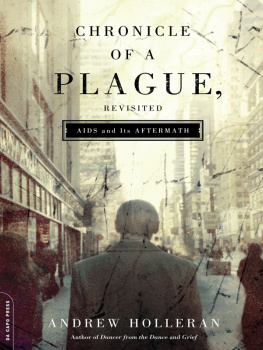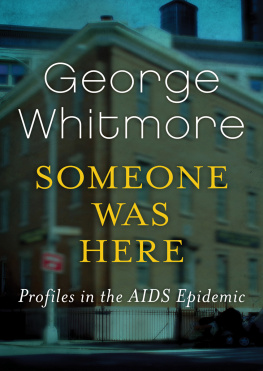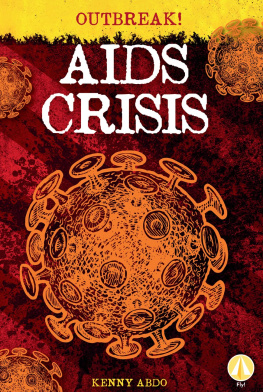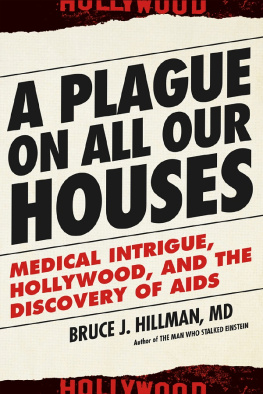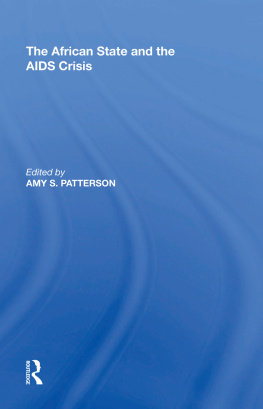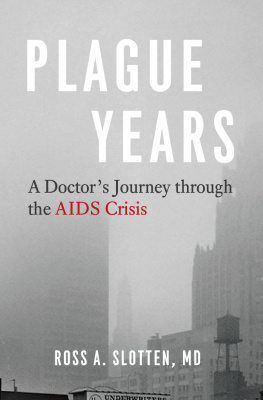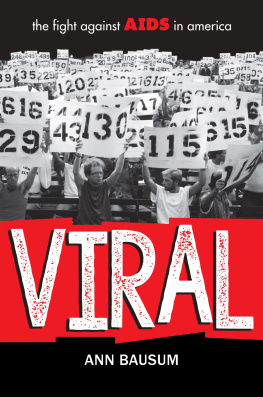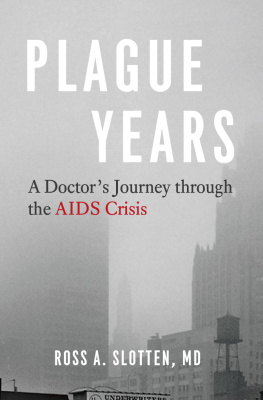A LSO BY A NDREW H OLLERAN
Grief
In September, the Light Changes
The Beauty of Men
Ground Zero
Nights in Aruba
Dancer from the Dance
Chronicle of a Plague, Revisited
AIDS and Its Aftermath
Andrew Holleran
Many of the designations used by manufacturers and sellers to distinguish their products are claimed as trademarks. Where those designations appear in this book and Da Capo Press was aware of a trademark claim, the designations have been printed in initial capital letters.
Copyright 2008 by Andrew Holleran
All rights reserved. No part of this publication may be reproduced, stored in a retrieval system, or transmitted, in any form or by any means, electronic, mechanical, photocopying, recording, or otherwise, without the prior written permission of the publisher. Printed in the United States of America.
Designed by Pauline Brown
Set in 11.5 point Garamond by the Perseus Books Group
Library of Congress Cataloging-in-Publication Data Holleran, Andrew.
Chronicle of a plague, revisited : AIDS and its aftermath /Andrew Holleran.
p. cm.
Some of the pieces in this collection originally appeared in Ground Zero, published in 1988 by William Morrow and Company, Inc.
ISBN-13: 978-0-7867-2039-2 eBook ISBN: 9780786731923 (alk. paper) 1. AIDS (Disease)New York (State)New York. 2. Male homosexualityNew York (State)New York. I. Holleran, Andrew. Ground zero. II. Title.
RA643.84.N7H65 2008
614.5993920097471dc22
2007053067
First Da Capo Press edition 2008
Published by Da Capo Press
A Member of the Perseus Books Group
www.dacapopress.com
Da Capo Press books are available at special discounts for bulk purchases in the United States by corporations, institutions, and other organizations. For more information, please contact the Special Markets Department at the Perseus Books Group, 2300 Chestnut Street, Suite 200, Philadelphia, PA 19103, or call (800) 810-4145, extension 5000, or e-mail .
1 2 3 4 5 6 7 8 9
Introduction
L EARNING A BOOK is out of print is a blow to an author. Its not that the copies in print have been destroyed, but that demand for the book is so low the publisher cannot justify printing any more. When I went looking for a copy of Ground Zero last winter, I was lucky to find one in a college library in Washington, D.C., on a shelf of other books about AIDS. The Date Due slip told me the book had been checked out only twelve times in twenty-four years; and not at all from 1992 to 1998 or 1998 to 2006. This had to do with a professor teaching, then dropping, a course that required the text, I thoughtwhat else keeps these books alive? The volumes on the shelf around mine looked equally untouched, as if they all had been put to sleep, like the awful time itself.
The awful time is what Ground Zero was about. I chose the title, long before 9/11, because it felt as if AIDS had exploded in New York like a bomb among gay men and left a crater in our lives. Now, however, Ground Zero means a real crater in Manhattan.
For this and other reasons, there seems to be little need to revisit the years when AIDS arrived in New York. These essays are being reprinted, in fact, only because Dale Peck and the English editor Richard Canning were upset that certain books written during the AIDS epidemic by people like Allen Barnett, Harry Kondoleon, Christopher Coe, David Wojnarowicz, and John Weir not only were out of print but, they felt, had not received their due because of the times in which they were published. So they spoke to Don Weise, an editor at Carroll & Graf, about launching a series of reprints, a series now in abeyance because of the demise of that publisher. (Ground Zero was the only one that squeaked through.) What drew Weise to the project, however, is still valid: He was afraid that this part of gay history was being forgotten.
I realized I had forgotten life in New York in the eighties when I began looking through Ground Zero. In fact, what struck me immediately as I leafed through its pages in the college library was that New York in 1983 now seemed as exotic as ancient Egypt. It was like opening up a tomb to come upon quotes from people whose voices, scattered throughout the essays, Id not heard in more than twenty years. Id forgotten my roommates telling me, I dont like looking at pictures of dead people. Id forgotten a friend saying, I wasnt doing anything everyone else wasnt. Or another friend whispering to me at the baths, The germs dont need me. But it was these voices of the dead that summoned up for me that awful time when no one could see the way out.
That no one could see the way out explains the essays in Ground Zero. In 1980 I was writing a column in the magazine Christopher Street called New York Notebook. Christopher Street was a new magazine founded by Charles Ortleb and Michael Denneny, among others, to provide a venue for writing about a subject (gay life) for which till recently it had been hard to find a home. Before AIDS hit, my column dealt with art exhibits, dance clubs, the music they played, and other minor issues of urban gay life. Then, around 1982, something called the new gay cancer appeared. I was not sure how to write about it. My first column on this topic (Journal of the Plague Years) was a satire: a fantasy on cryogenics in which I imagined having oneself frozen till the unpleasantness was over and then awakened, like Rip Van Winkle or Walt Disney. Alas, this was not an option.
Instead, many people died; others took care of them; still others organized. Everybody was afraid. Its the latter emotion that pervades this book. A quarter of a century later, the essays in the original Ground Zero seem to me to be about three self-centered fears: Was I going to die? Would having sex kill me? And, What could I write about now? Laid end to end, these columns remind me of a reader who accused me of something the Jesuits call morose delectationan addiction to melancholy. At the time I wondered if he was right; now this does not even seem a question.
In the end, I see now, I was one of those people who were frozen, if not cryogenically, by AIDS. I did not join Act Up; I did not write a play or memoir, or demonstrate; I moldered in a subset of gay men called the worried well. Though the worried well did not think their worries worth attention (because they were not sick), as psychologist Clifford Odets pointed out later, such men had their own problems: survivors guilt, withdrawal, and depression. Negative and negative, uninfected and pessimistic, I felt there was nothing we could do about AIDS except wait for a scientist to find a cure. Reading Ground Zero today, the monotony that permeates this collection of columnspublished in a monthly magazine, but read here, back to back, in book formseems exacerbated by a dreadful fatalism and a sense of impotence.
Writers feel impotent to begin with, I supposeonlookers, not actorsbut at no time did commentary seem more pointless than 1983. I had originally taken on the column in ChristopherStreet to solve a literary problem: the difference between nonfiction and fiction. I thought a nonfiction column might help me see what that was, and whether there was any point in writing fiction at all. By the time Ground Zero came out, in 1988, real life had trumped the question: Fiction seemed beside the point.
For what imagined story could match what was going on every day in gay New York in the eighties? The wish to pay someone to freeze you till it was over, like the mad scientist in one of Charles Ludlams plays, made sense. Even Ludlam could not, I suspect, have imagined what finally happened to him. What happened to him, and was happening to others, was so bizarre that the first time I mentioned AIDS in my column I was afraid I would annoy readers (for the same reason hosts told guests not to bring it up at dinner). So I made sure to follow every column about AIDS with one that was light or funny. (Hence six satires on safe sex in the original book, which Ive removed.) Eventually there was no need to apologize for mentioning AIDSone had to apologize for not mentioning itand, by 1986, I was writing only two kinds of essay: descriptions of New Yorkasacemetery and elegies for friends.

